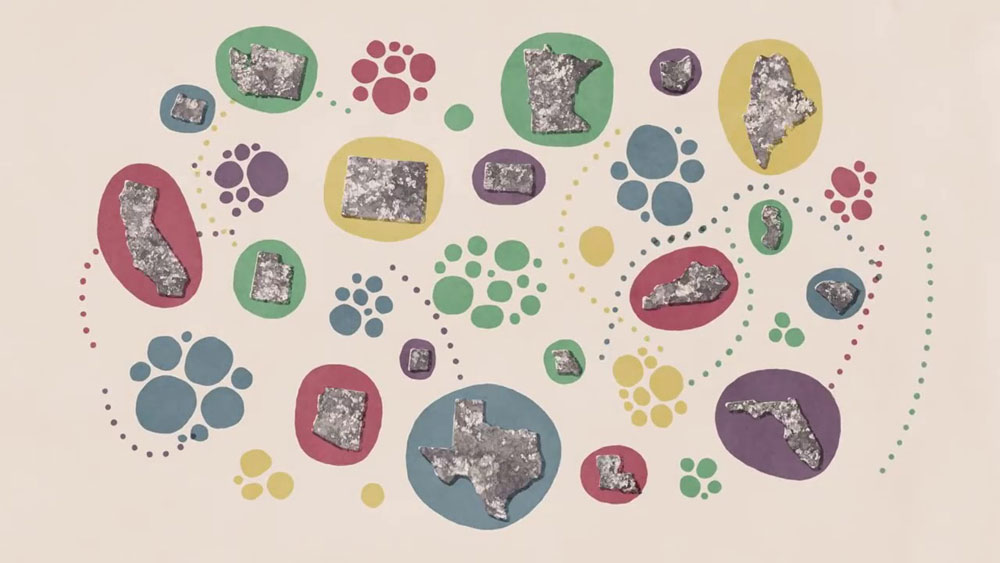
This article comes from the spring 2020 edition of the Nonprofit Quarterly.
At a recent meeting with nonprofit managers, only a few of the fifty attendees were familiar with the notion of stakeholders. This was surprising, because connecting meaningfully with stakeholders—the people who influence and are impacted by an organization’s choices—is vital to sustainable mission fulfillment.
This article explains who stakeholders are and why all organizations should know theirs. It also shares tips for how to identify and work with stakeholders in meaningful ways to promote equity and improve decision making. It concludes with a systems-based approach to thinking about stakeholders that illuminates interdependencies among people, organizations, sectors, and societies.
What Is a Stakeholder?
A stakeholder is a person (or entity) who can affect and/or be affected by your organization—who, in other words, has a stake in your work. Stakeholders (such as volunteers, donors, and vendors) influence your ability to fulfill your mission; they are also the people (such as beneficiaries, partner organizations, and the community) who experience the consequences of your choices and actions. Stakeholders can be categorized as internal (those who work for or volunteer with your firm) or external (such as government agencies and the media). In project management, stakeholders are sometimes categorized as primary or secondary—that is, people who are affected directly or indirectly.
Why Do Stakeholders Matter?
Thinking about stakeholders is essential for an organization to be effective, accountable, and ethical (e.g., maintaining equitable power dynamics).
Effectiveness. In past decades, nonprofit organizations generally focused on developing relationships with those with whom they directly interacted, such as the people they served and funders. Now, organizations increasingly recognize that mission delivery requires a more holistic approach, since the complex problems nonprofits deal with cut across sectors and transcend geographic boundaries. For example, hospitals must attend to factors directly related to patient care, such as being able to recruit and retain qualified staff. Yet they must also pay attention to broader issues, such as national healthcare policies (e.g., insurance coverage and reimbursement rates) and socioeconomic factors that impact public health (e.g., homelessness, nutrition)—what are often called the “social determinants of health.” Complex problems require the input and cooperation of numerous stakeholders with multiple points of view to create solutions.
At the organizational level, it’s one reason why advocacy has become so important. Organizations increasingly recognize that their ability to advance their mission depends on many variables beyond their direct control.1 Understanding who has a stake in an organization’s performance is one way to develop a more holistic perspective, because it helps illuminate manifold issues and how these are interrelated.
Accountability. Another way to think about stakeholders is to ask, “Who are we accountable to, and what is important to them?”2 Accountability means taking responsibility for our choices and their consequences. It also means preventing and rectifying abuses of power.3 Accountability is thus multidimensional. Vertical accountability focuses our attention on compliance—living up to our formal obligations (such as laws, contracts, and regulations), and having legal redress when things go wrong. Horizontal accountability, also known as relational accountability,4 entails voluntarily maintaining parity and reciprocity in our relationships rather than being forced to do so through legal mandates.
Ethics—Promoting Equitable Power Dynamics. The nonprofit sector is rooted in relational accountability. It fosters trust in civil society while also being dependent upon the public’s trust to remain viable.5 However, business pressures can sometimes cause nonprofit organizations to lose sight of this, resulting in mission creep and abandoning of essential programs that cannot pay for themselves. As Nonprofit Quarterly’s editors have described, explicitly identifying stakeholders is an effective way to counter such pressures, because it brings ethics and relational accountability to the forefront of organizational decision making.6 It ensures that those with the least power have a meaningful voice and equitable opportunities to advance their interests.
How to Identify and Assess Stakeholders
An example of a thoughtful stakeholder analysis is the 2019 Integrated Report from the Indiana CPA Society (INCPAS).7 This organization identified its primary and secondary stakeholders—that is, constituents it works with to cocreate value for mutual and public benefit. INCPAS’s identified stakeholders and business partners include individual members (certified public accountants throughout the state); regulators (such as the Indiana Board of Accountancy); college educators and accounting students; high school audiences (such as teachers, students, counselors, and parents); employers; business decision makers; and other professional accounting organizations.
For each stakeholder group, INCPAS summarizes why it engages, how it engages, the value it creates for the stakeholder, and the value the stakeholders create for INCPAS.8 In addition to a five-column table that outlines this information, INCPAS includes a graphic summary.9 Understanding who it engages with, why it engages, and how it engages enables INCPAS to develop and communicate its mission-driven strategy.10 Its strategic framework includes the following set of questions: “1) What do we want or need to achieve? What do we expect? 2) for who? 3) Why? and 4) What is the goal or expectation? How do we define success?”11 This holistic thinking then informs both organizationally focused objectives (e.g., increasing membership retention) and boundary-spanning objectives like advocacy and diversity (“attract and retain an ethnically diverse pool of talented individuals to the CPA profession”).12
To keep mission front and center in strategic decision making, consultant Steve Zimmerman offers a tool called the “matrix map” to illuminate a holistic view of a nonprofit organization’s business model.13 This tool includes a market wheel graphic for identifying direct beneficiaries; other beneficiaries, such as funders; partner organizations; labor and human capital; and political and social environmental factors. The tool drills down further, depicting how these various constituents relate and providing concrete questions to guide decision making—such as considering how needs have changed over time (or might change in the future), and identifying barriers to access that each group might experience.
Sign up for our free newsletters
Subscribe to NPQ's newsletters to have our top stories delivered directly to your inbox.
By signing up, you agree to our privacy policy and terms of use, and to receive messages from NPQ and our partners.
Once an organization has identified its stakeholders, the next step is to consider how it wants to interact with them. An approach that promotes equity can be found in The Power Manual, by Nonprofit Quarterly’s Cyndi Suarez.14 This analysis builds on citizen participation expert Sherry Arnstein’s ladder of participation, describing eight types of relationships (such as manipulation, consultation, partnership, and citizen control), with examples for each type.15 The lower levels reflect unilateral power structures, where organizations essentially go through the motions of engagement while preserving the status quo. The upper levels reflect shared power, with the highest type giving control of resources and decision making to those most affected by the issues.
Other questions to consider in stakeholder interactions include: To what degree do we integrate stakeholders into our decision making? Do we consider both the short- and long-term impacts of our actions on various stakeholder groups? What metrics do we use to track the well-being of our stakeholders? At what level in our organization are these metrics monitored and discussed? What channels do we have to give stakeholders a voice in the formation of our strategy and objectives? How willing are we to adapt our approaches and behaviors based on those perspectives?16
How Not to Do a Stakeholder Analysis
It is also important to mention some conventional approaches to stakeholder analysis and why these are not suitable for organizations interested in equitable outcomes. For example, many textbooks on project management suggest the use of a two-by-two grid, where the horizontal dimension depicts level of interest (low to high), and the vertical dimension represents level of power (low to high). This analysis results in four quadrants, with a different strategy recommended for each: Pay close attention to those with high interest and high power (upper-right quadrant); keep those with high power and low interest satisfied (upper-left quadrant); communicate with high interest/low power stakeholders (lower-right quadrant); and simply monitor those with low power and interest (lower-left quadrant). In this model, constituents with little voice, power, and interest remain outside the strategic focus of an organization. Yet for many nonprofits, these stakeholders are the very reason the organization exists.
An alternative approach is the stakeholder salience model, which classifies stakeholders based on their degree of legitimacy, power, and urgency.17 By analyzing the overlap among these categories, this model identifies seven types of stakeholders (discretionary, dormant, demanding, dominant, dangerous, dependent, and definitive), as well as an eighth category, nonstakeholders (those with no power, legitimacy, or urgency).18 However, because all organizations depend on public goodwill to exist (e.g., legitimacy and/or social license to operate), all community members are, in fact, stakeholders.19 Further, casting people to the margins is problematic for organizations committed to equity. An exclusionary mindset can also blind organizations to potential opportunities. For example, social enterprises are increasingly building business models to integrate and elevate lower-power groups into their organizations and society. Examples include Televerde, a telecommunications company with a twenty-year partnership to help incarcerated women develop job skills and personal goals; Greyston Bakery, which has an open hiring and community services model; and Rango Honey, which integrates honey production, job training, and assisted community living for adults with autism.
Expanding the Frame—From Stakeholder Analysis to Systems Mapping
Some argue that attending to stakeholders is not enough—we must also consider environmental and structural factors such as planetary conditions, historic and current patterns of interaction (e.g., structural racism and systemic inequality), and the interdependencies and multilevel flows among individuals, organizations, communities, and nations.20 Systems mapping is a tool to make such dimensions visible. Examples include food systems maps, which depict supply, demand, and resource flows within environmental, social, and economic contexts;21 healthcare as an integrated functioning system that accounts for governance, culture, and multiple stakeholders;22 and the Hewlett Foundation’s Madison Initiative—a dynamic map that illustrates the complexities of and impediments to effective, deliberative governance.23
A systems approach attends to temporal dimensions (past, present, and future); illuminates and depicts multiple perspectives; and surfaces assumptions and competing values. The resulting insights from these meaning-making conversations promote shared understanding and stimulate creative and integrative thinking to open up new approaches and solutions.
Two good starting points to learn about systems thinking are Learning for Sustainability and The Systems Thinker®.24 These resources provide an accessible overview of core ideas and supporting concepts such as feedback loops, stocks and flows, bidirectional causation, and the connection among events, behavioral patterns, system structures, and mental models.
A note of caution: As useful as systems mapping is, every map is inherently incomplete. Regardless of who is involved and how it is developed, it will omit certain aspects of reality and privilege others. Because we all have blind spots, the maps we create will also have them. Mapmaking is a political act—it transforms something previously ungovernable into a form that can now be controlled.25 This means that mapmakers define and name reality in ways that shape what is deemed to be “normal,” “real,” and “correct,” which can lead to discounting and even eradicating other worldviews.26
Stakeholder analysis is useful for gaining awareness of who your organization impacts and who you depend on to fulfill your mission. Thinking explicitly about stakeholders increases strategic focus, expands options, and aligns organizational effort. Systems mapping makes visible the connections between stakeholders and your context. As you identify your stakeholders and nurture reciprocity and relational accountability, remember that inclusivity is the key to equity. We must make space for everyone beyond the boundaries of our maps and Venn diagrams. This leaves room for future generations and for all the possibilities we cannot yet imagine.
I am grateful to the University of Virginia Darden School of Business’s Institute for Business in Society for deepening my knowledge of stakeholder theory. This article was also inspired by a conversation with Mark Jamnik and Eric Keosky-Smith, Conscious Capitalism Arizona, and John Janney, Janney Financial Group, who provided generative insights. Any errors are mine alone.
Notes
- Pat Libby & Associates, The Lobbying Strategy Handbook: 10 Steps to Advancing Any Cause Effectively (Thousand Oaks, CA: SAGE Publications, 2011).
- See Indiana CPA Society, 2019 Integrated Report (Indianapolis: Indiana CPA Society, 2019), 21.
- See Andreas Schedler, “Conceptualizing Accountability,” in The Self-Restraining State: Power and Accountability in New Democracies, ed. Andreas Schedler, Larry Diamond, and Marc F. Plattner (Boulder, CO: Lynne Rienner Publishers, 1999), 13–28.
- Joy Moncrieffe, Relational Accountability: Complexities of Structural Injustice (London, UK: Zed Books, 2011).
- Herrington J. Bryce, “The Public’s Trust in Nonprofit Organizations: The Role of Relationship Marketing and Management,” Nonprofit Quarterly 22, no. 4 (Winter 2015): 84–96, published online January 11, 2016.
- The editors, “Unbalanced: A Map of Nonprofit Stakeholders,” Nonprofit Quarterly 26, no. 2 (Summer 2019): 20–22, published online August 24, 2019.
- Indiana CPA Society, 2019 Integrated Report.
- Ibid., 21–24.
- Ibid., 24.
- Ibid., 29–34.
- Ibid., 29.
- Ibid., 30–33.
- Steve Zimmerman, “Community Influences: Understanding Nonprofit Markets,” Nonprofit Quarterly 25, no. 2 (Summer 2018): 68–77, published online August 29, 2019.
- Cyndi Suarez, The Power Manual: How to Master Complex Power Dynamics (Gabriola Island, BC, Canada: New Society Publishers, 2018).
- Sherry R. Arnstein, “A Ladder of Citizen Participation,” Journal of the American Planning Association 35, no. 4 (July 1969): 216–24.
- Raj Sisodia, Timothy Henry, and Thomas Eckschmidt, Conscious Capitalism Field Guide: Tools for Transforming Your Organization (Boston: Harvard Business Review Press, 2018).
- Ronald K. Mitchell, Bradley R. Agle, and Donna J. Wood, “Toward a Theory of Stakeholder Identification and Salience: Defining the Principle of Who and What Really Counts,” Academy of Management Review 22, no. 4 (October 1997): 853–86.
- Ibid., 874.
- See, for instance, “Ethics Explainer: Social license to operate,” The Ethics Centre, January 23, 2018.
- See, for instance, Tima Bansal, “From Tima’s Desk: Why I No Longer Believe in the Stakeholder Perspective,” Network for Business Sustainability, November 26, 2019.
- See, for instance, “Food System Tools,” Nourish, accessed January 13, 2010.
- Peter Tsasis et al., “Outcome mapping for health system integration,” Journal of Multidisciplinary Healthcare 6 (March 14, 2013): 99–107.
- The Madison Initiative, William and Flora Hewlett Foundation, accessed January 14, 2020.
- “Systems thinking,” Learning for Sustainability, accessed January 14, 2020; and Michael Goodman, “Systems Thinking: What, Why, When, Where, and How?,” The Systems Thinker®, accessed January 14, 2020.
- Patricia Mooney Nickel and Angela M. Eikenberry, “Knowing and Governing: The Mapping of the Nonprofit and Voluntary Sector as Statecraft,” Voluntas 27, no. 1 (February 2016): 392–408; and James C. Scott, Seeing Like a State: How Certain Schemes to Improve the Human Condition Have Failed (New Haven, CT: Yale University Press, 1998).
- Jeremy Goldbach, “The MSW@USC Diversity Toolkit: A Guide to Discussing Identity, Power and Privilege,” MSW@ USC Blog, University of Southern California Suzanne Dworak-Peck School of Social Work, May 7, 2019.












